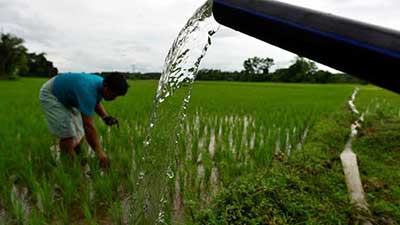Date: 04/03/2023
Relevance: GS-3: Issues relating to planning, mobilisation of resources, growth, development, and employment
Key Phrases: Water Credit Initiative, Climate Change, Climate Adaptation, Mitigation Efforts, Water.org, Per Capita Water Availability ,Water Trading , Water regulations, Water Quality Standards, Recycle And Reuse Markets
Why in News?
- India’s water resources are under tremendous pressure. There are wide temporal and spatial variations in the distribution of water.
- One of the major barriers to safe water and sanitation is affordable financing.
- The WaterCredit Initiative loan program by water dot org tries to address this barrier as it helps bring small loans to those who need access to affordable financing and expert resources to make household water and toilet solutions a reality.
Key Highlights:
- India receives more than 80 per cent of the rainfall during four months of the year.
- As regards unequal spatial distribution, the Barak and Brahmaputra basins have a per capita water availability that is more than that of the Ganga basin.
- India’s per capita water availability has touched the water-stressed benchmark, and is likely to reach the water-scarce scenario by 2050.
Water Credits:
- Water credits deal with the transaction between water deficit and water surplus entities within a basin.
- It represents a fixed quantum of water that is conserved or generated. It is almost a mirror image of the concept of carbon credits.
- However, unlike carbon credits, the spatial limits for transactions are confined to hydrological boundaries — that is, river basin or watershed.
Water Credit Initiative Loan Program:
- It is an initiative by water.org which helps to bring small loans to those who need access to affordable financing and expert resources to make household water and toilet solutions a reality.
How does it work?
- A region is identified where people need access to water and sanitation and that is ready for a microfinance solution.
- Partnership is made with carefully selected institutions to provide affordable financing for water and sanitation to families in need.
- These microfinance partners establish water and sanitation loans in their portfolio of offerings. They are supported by providing technical assistance, connections and resources to get them started.
- People in need use these small, affordable loans to put a tap or toilet in their homes and access local resources to do the work.
- Every repaid loan can be lent to another family in need of safe water or sanitation.
Water Credit System Between Municipalities And Industries:
- Industries can buy water credits from water-rich municipalities that are crunched to finance large-scale floodwater harvesting or wastewater treatment projects, which aid in conserving water.
- Thus, the multiplayer approach is essential for the water credit system.
Best Global Practices:
- India should learn from global water trading successes, like that of Australia (for example, the Murray-Darling basin), to lay a roadmap for water trading and also ensure water regulation by setting up related authorities.
- Another notable success story comes from Chicago Mercantile Exchange, where participation is seen from actual users such as farmers and municipalities and financial investors.
Trading Of Water And Tradable Water Licenses In India:
- NITI Aayog is contemplating draft recommendations on future trading of water and tradable water licenses.
- With the effective implementation and stringent regulatory standards, water trading also paves way for water quality standards.
- This makes water “quality” a tradable commodity.
- Under such a system, a source pollutant (industry) having controlled pollutant levels “sells credits” to another source pollutant (industry), which can use these credits to enhance their level of treatment in order to comply with the regulatory requirements.
- This further promotes growth in the recycle and reuse markets through the utilisation of heavy metals/trace organics released in the water from both the industrial and agricultural sectors.
Challenges Of Water Credit System:
- An innate flaw of this water credit system is that the market is dominated by a small number of rich institutions or sellers.
- Due to this market domination, rich sellers can control the market by buying credits from the poor, and continue to misuse the shared water resources.
- The market competition among sellers is further reduced due to the lack of awareness about the water credit concept.
- In such a case, a regulatory body must be in place to facilitate and successfully maintain free market conditions.
- Experts have raised some concerns about the awareness among water users and water suppliers on water trading.
- It is anticipated that India could face opposition if water is made a tradable commodity.
Way Ahead:
- The credit system can be used to highlight the water quality merits and strengthen economic relations both at a global as well as regional level.
- Such a system can substantially reduce the burden of the government that releases funds towards mitigation as well as post-disaster events such as floods and droughts.
- The markets can even ‘insure’ irrigated and rain-dependent agriculture against droughts by locking in water prices.
- There has been no strong dialogue on the implementation of a water credit system, so far. Thus, India needs to aggressively alter and adopt practices to expand finance opportunities within the water sector.
Source: The Hindu BL
Mains Question:
Q. India needs to aggressively alter and adopt practices to expand finance opportunities within the water sector considering the huge water stress faced by Indian cities. Comment. (150 words).






















